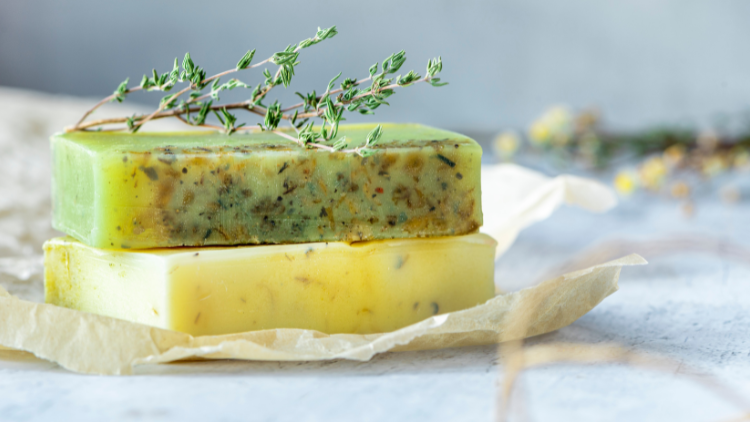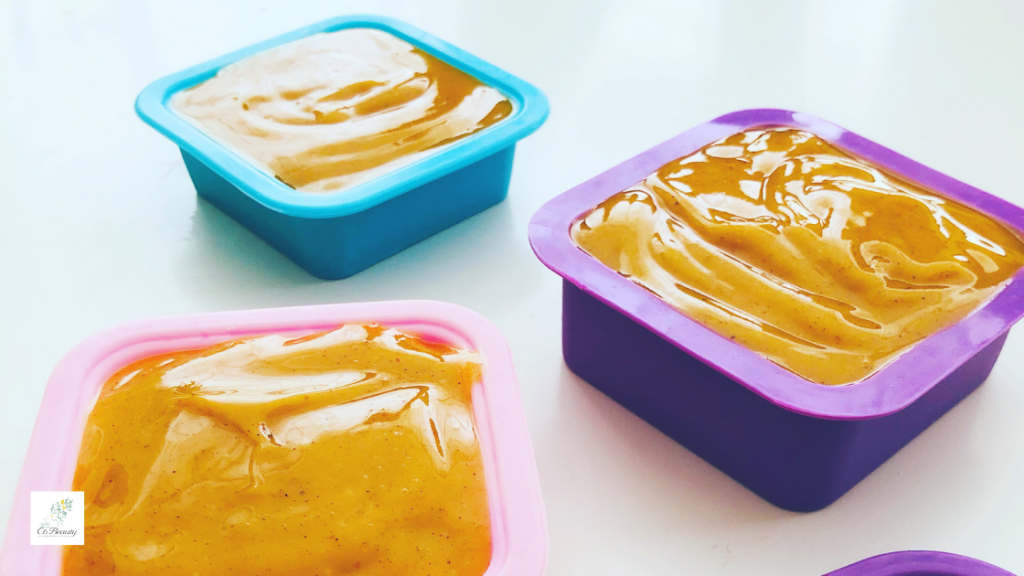How long does it take to cure Cold Process Soap? This is certainly one of the most common questions asked by those who are making homemade soap using the cold process for the first time. Cold process soap curing is an important step in the process and cannot be neglected. In this article, I have collected all the questions I have been asked on this subject, hoping that it will also resolve your doubts and help you to create your own homemade soaps with less fear or hesitation.
Homemade Cold Process Soap: The course (Ad)
Before answering your questions, I wanted to tell you that the subject of curing is also explored in detail in my course on making soap using the cold method, where I also explain what happens during this time. In the course, you will be guided step by step through the whole process of cold soap making, so that you can finally create your own soaps without having to rely on tutorials. Making your soaps, you will become more eco-friendly and an ally of the environment.
Cold Process Soap Curing: Meaning
In order to answer questions about the curing of homemade soaps, let’s take a small step back and explain what curing is. Curing is the period of time it takes for soap to become ready for use. It is the last stage of the soap-making process after the:
- choice of ingredients,
- preparation of the caustic soda solution,
- saponification and reaching the trace,
- and then soap curing.

Unlike the melt and pour or rebatch techniques, the cold method requires a long curing time. During this time, the saponification reaction is completed, and the water evaporates. The need for a long curing time makes it impossible to use the soap immediately, but forces us to wait weeks or even months before we can use it. Let us take a closer look at this stage of the process by answering a few questions.
1. Can soap be used without curing?
Let’s start with: “Can soap be used without curing?”. The answer to this question is simple and straightforward. NO!
No, we cannot use soap produced with cold method without proper curing. If we try to use it immediately or even after one day from pouring it into the mould, we would find ourselves in front of a soap which is too soft and inconsistent. This because it has not had the necessary time to harden. Furthermore, handling an uncured soap means touching a paste which is too aggressive for the skin. At this stage, the saponification reaction is still going on and we have a lot of free caustic soda in the mass.


If in contact with the skin, would be very aggressive, inducing irritation or more serious damage to the skin. In this stage, my advice is not to touch the soap mass unless you are wearing protective gloves. Only when the curing process is complete can we extract our soap without gloves.
2. How long does cold process soap take to cure?
The question I am most frequently asked is: ” How long does cold process soap take to cure?”. Unfortunately it is not possible to give a clear-cut answer to this question. In the formulation of homemade soap using the cold method, many factors can change. We may, for example, use various oils and butters in different percentages. We might decide to apply a low or high soda discount, or even play with the percentage of water used. The smallest variation in even one of these factors would result in different soaps which, would need different curing times. It is for this reason that often, on blog posts or video tutorials, no precise curing time is given, but more of an indication.
In most cases, it is recommended to wait at least 4 weeks before using the soap. This period of time should not be strictly respected, but considered as an indicative date. After this time, we can decide whether the soap needs further curing time or is ready for use.
3. How do you know when soap is ready to cut?
Since it is not possible to assign a precise length of curing time to each bar of soap, how do you know when the soap is ready to be cut? Experience certainly plays an important role here, but if we are beginners and have no idea what to expect, let’s see how to do it.
After the famous four weeks, we take our soap and try to find out what condition it is in. First of all, we note the state of the surface. If we touch it and leave our imprint, then the soap still needs to be cured. If the surface is hard and stable, we slightly detach the soap from the mould and observe the internal state of the soap. In case we notice a more intense colouring as we move from the surface to the bottom of the mould, this means that there is still water trapped and that our soap still needs to be cured. If, on the other hand, the soap appears uniform without areas of different colour and intensity, then we can start using it.

When in doubt always remember that “the more a soap cures the better”. Leaving the soap to cure for a few more weeks certainly won’t do any harm. On the contrary, it will give it more time to make sure that the excess water has evaporated and the saponification reaction has been completed.
4. What is the fastest way to cure soap?
This question would deserve its own article. In order to make the curing process faster, it would be necessary to intervene on the formulation, trying to use less water or choosing oils and butters which tend to make the soap harden more quickly. If you are curious to know more about formulation let me know and I will write an article to answer your questions. In this post, however, let’s see some simple tricks suitable for anyone, even for beginners.
1. Cold Process Soap Curing in different seasons
I have certainly make the best soaps in spring and summer (PS: northern hemisphere). In these months the days become longer and the temperatures are higher. These conditions are perfect for curing soap, which will need dry air and warmth to lose its water content. During the winter months, I have found it very difficult to create my soaps. It takes several months to get a well hardened soap.
2. Cold Process Soap Curing: Where should I cure my soap?
Another factor that could play an important role in the curing process is the place where it is cured. Choosing to cure our soaps in a damp cellar with little air exchange, will certainly not help the process. This condition could instead force us to wait months for the soap to become ready for use. Choosing a well ventilated, non-humid area of the house will help the process to take place more quickly.
When the soap seems to have hardened, take it out of the mould and turn it over. Let the soap dry perfectly on all sides and leaving it for a few more days. Even though it could seem perfectly cured, it may still contain some residue of water or free caustic soda. Better not to risk it.

I hope that this article has helped to clear up any doubts you may have about curing. If you want to know more about the cold process technique check out my course all about production of soaps. You can find it here!
Gabi
Ready to make your first soap with my FREE guide to making soap?



